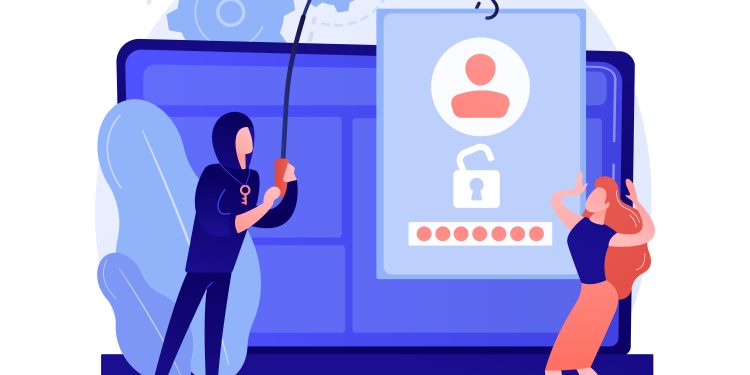Conducting transactions and sharing personal data online has become easier than ever before. Consumers can make purchases, send money, sign documents and more in just a few moments. But while digital has brought a newfound level of convenience, it has also introduced a new level of danger. With the increasing amount of personal data circulating on the dark web, the number of identity theft and fraud cases has escalated. Data from the Federal Trade Commission (FTC) reveals a staggering 1.1 million cases of identity theft reported in 2022 alone.
A quick search on identity theft tells you everything you need to know—this form of fraud isn’t going away any time soon. With phishing, vishing, deepfakes and other scams becoming increasingly sophisticated, consumers must be on the offense before a cybercriminal wipes out their entire bank account … or worse. It’s critical that they are aware of all the ways fraudsters can steal their identity and what measures they must take to protect themselves.
Exploring Different Types of Identity Theft
There are seven common types of identity theft scams that consumers should be aware of, including:
- Financial identity fraud, which is one of the most common types of identity theft. Fraudsters use stolen bank account or credit card details to make unauthorized purchases or withdrawals. Criminals can also use these details in combination with personally identifiable information (PII) to take out loans, open new credit cards or wipe out entire bank accounts.
- Synthetic identity theft can be the most difficult to detect. It involves fraudsters creating fabricated identities by using both fake and real information. They can then use these identities to open bank accounts, access lines of credit, apply for credit accounts and take out loans. Fraudsters can also combine real Social Security numbers with other data to establish a credit record. By making purchases and quickly paying them off, criminals can build a solid credit score to secure bigger loans and credit lines.
- Social Security number identity theft is often the most devastating, and unfortunately, happens too often. Criminals can steal Social Security and account numbers from data breaches or phishing scams to apply for tax refunds, government benefits and more. Oftentimes, a consumer’s credit score is damaged before they realize it, and they are left with legal issues and potential fraud charges.
- Tax identity theft is linked closely with Social Security number identity theft, as fraudsters leverage stolen Social Security numbers to file tax returns and apply for tax refunds. During this year’s tax season, the Internal Revenue Service (IRS) reported over one million tax returns for possible identity theft.
- Child identity theft: Research suggests that nearly 1 in 50 children will be victims of identity theft every year. Criminals can access a minor’s medical records or even destroy their credit scores. Unfortunately, close acquaintances or family members are common culprits of child identity theft.
- Medical identity theft: Cybercriminals can obtain access to an individual’s medical records to access services under their name, such as receiving dental and medical care, purchasing prescriptions and obtaining other insurance benefits. In addition to posing a financial risk, medical identity theft can also result in inaccurate medical records which can lead to a misdiagnosis.
- Criminal identity theft: Cybercriminals can use someone’s identity to commit theft or fraud under their name. Common criminal identity theft cases even involve criminals using people’s driver’s licenses to commit crimes in other states, making it difficult for them to get caught.
How Businesses Can Do Their Part in Preventing ID Theft
Organizations play a significant role in the fight against fraud. While it’s impossible to prevent fraudsters from finding ways to commit identity theft, there are ways businesses can block their attempts. Biometric-based identity verification, where a government-issued ID is compared to a live selfie, is a safe and secure authentication tool that companies can leverage to confirm their user is currently present and truly who they claim to be. By confirming a user’s identity at account creation and after every login, organizations can prevent account takeovers and most importantly, protect their users’ PII.
How Consumers Can Protect Themselves
Consumers should always take active steps to protect themselves. This requires the use of strong passwords when conducting transactions online and enabling additional security features, like two-factor authentication wherever possible. Given how sophisticated phishing scams have become, consumers should also be extra wary of who they share their personal information with and avoid doing so if they can.
If a consumer discovers they have fallen victim to identity theft, they must immediately inform their local law enforcement. They should also take specific measures based on the type of identity fraud they are involved in. For instance, if someone stole their credit card information, they should immediately lock their credit report and report it to their credit card company. Victims can also sign up for credit monitoring and regularly check annualcreditreport.com for suspicious activity.
Putting an End to ID Theft
Identity theft might not be going away any time soon, but with the right measures in place, the number of annual cases can be decreased. Organizations should proactively take steps to protect their customers with robust security technologies. Consumers can also feel more at ease by understanding the common types of identity theft and proactively taking steps to protect themselves.










